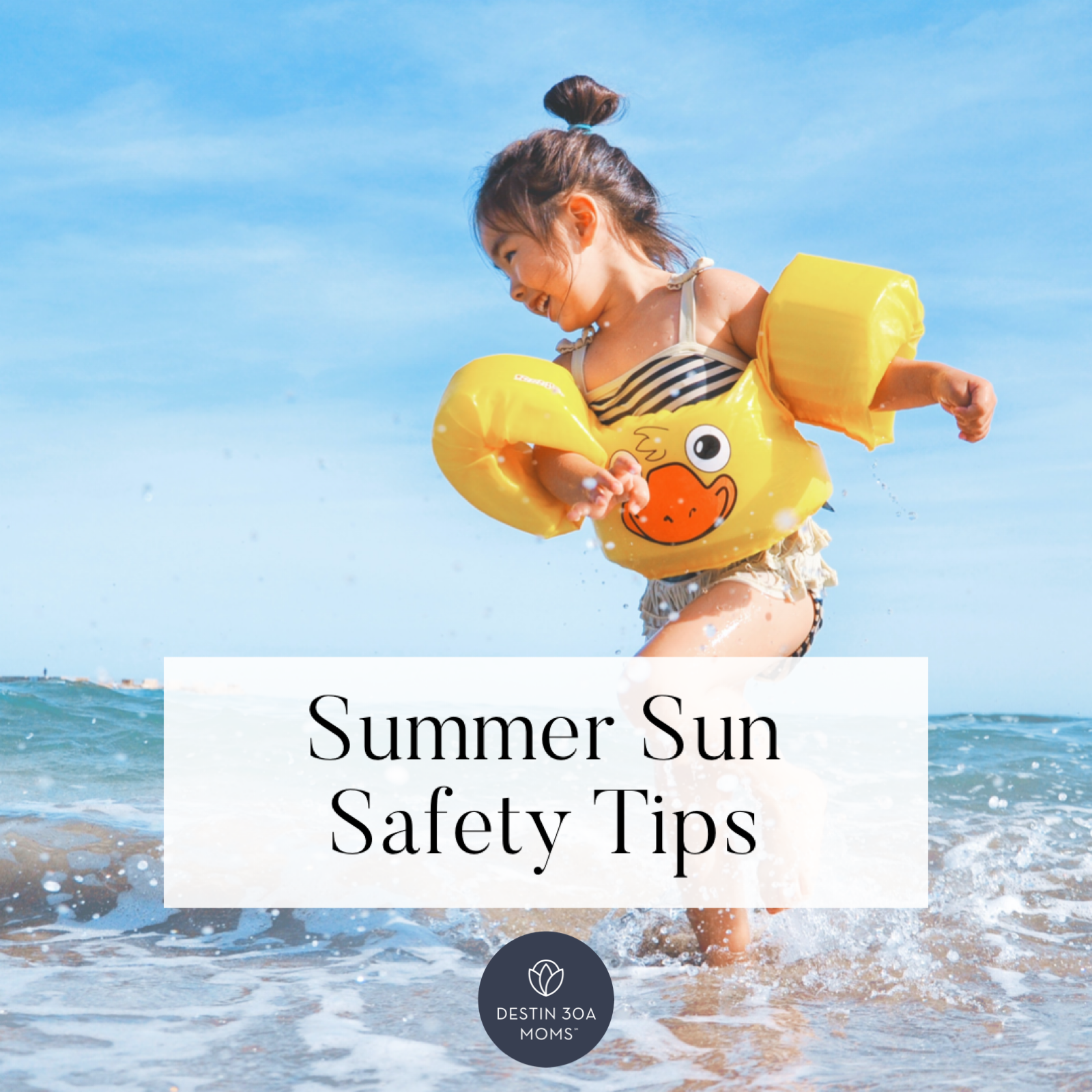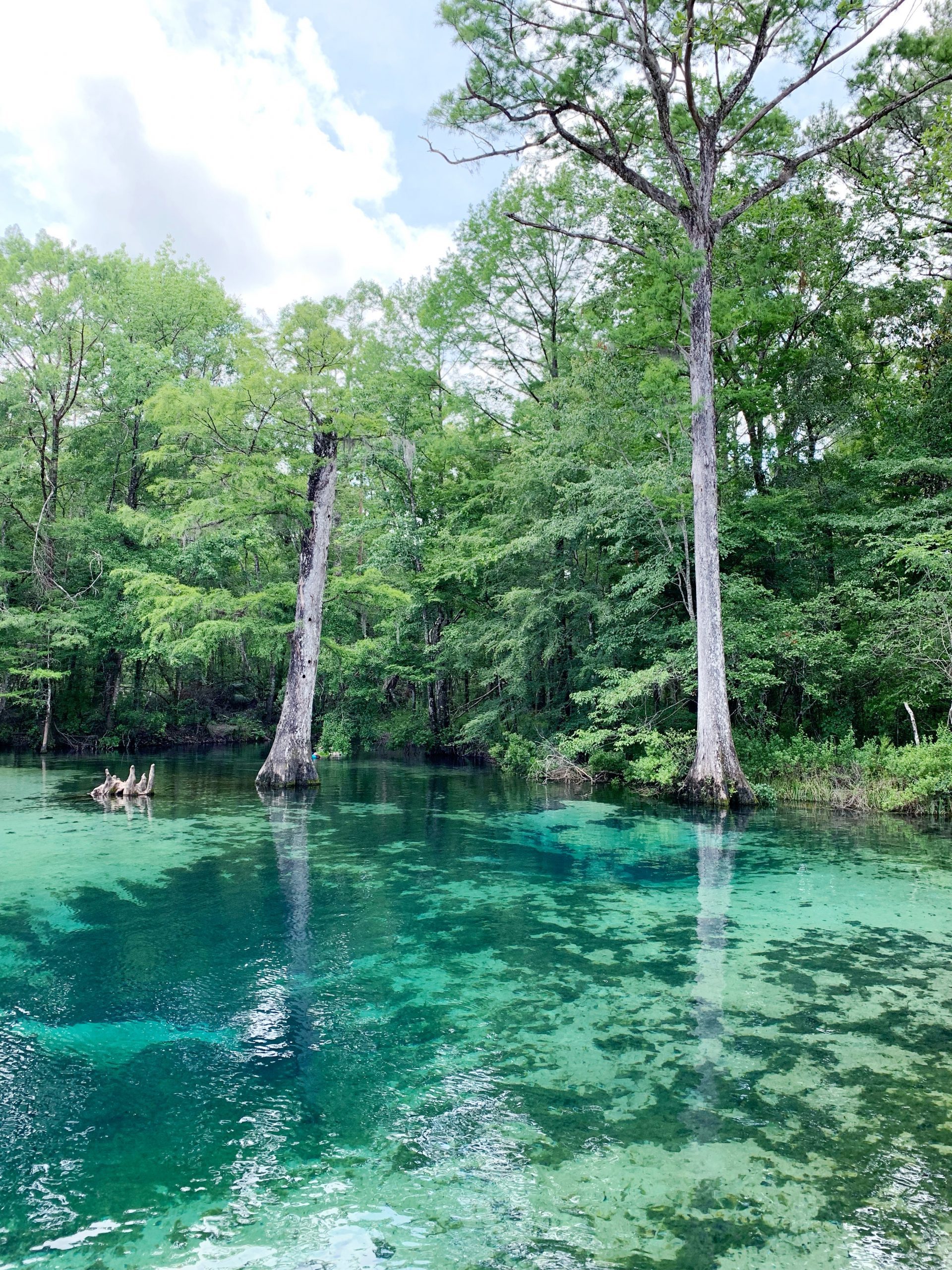
Summertime equals more time in the sun for most of us. We wanted to compile 8 basic summer sun safety tips to share and also want to remind you that being out in the sun is actually a really important part of being healthy. If you grew up like I did, then you were potentially taught that any time in the sun could cause harm. But that just isn’t the case. Many experts say that being out in the sun (not the mid day strong sun) for 5-30 minutes without sunscreen can help with melatonin production, fighting off depression, keeping your immune system strong, and more. Of course, too much sun can be damaging…so we wanted to share some tips on how to keep your skin protected while enjoying the beautiful sunshine this summer!
8 Summer Sun Safety Tips
1. 30 is the number you need to know
The American Academy of Dermatology Association recommends using a sunscreen that is SPF 30 or higher, is water resistant, and provides broad spectrum coverage.
2. Reapply every 2 hours
To make sure you get the most protection possible make sure you reapply every few hours. You may need to reapply even sooner if you are sweating or swimming.
3. Your lips need protecting too
Snag a sunscreen chapstick and keep everyone’s lips covered. Burning your lips is the actual worst! Ouch!
4. Prioritize shade
Use an umbrella at the beach and make sure you bring hats for anyone that may want or need it!
5. Estimate a shot glass amount of sunscreen
1.5 oz is typically enough to cover your entire body. Don’t forget the pesky spots that are easy to miss. Nothing worse than a hand print of non-burned skin in the middle of a big ole red patch of sunburn lol. Ask someone you’re with for hard to reach places!
6. Even if you’re only outside for 20 minutes you still may need sunscreen
Like we mentioned earlier, depending on the shade of your skin you may not be able to be outside for 20 minutes without burning. You know yourself best, so just think ahead. And remember that the Florida sun is often a lot stronger than it may feel!
7. Mineral sunscreens cut out the toxic chemicals
You probably have seen sunscreens be recalled over the years on the news. In fact, several popular sunscreens were recalled last year because of benzene contamination. Benzene is known to be cancer causing. You can check out more info on the recall here. Here is some info on the difference between chemical and mineral sunscreen options:
Chemical sunscreens are designed to be absorbed by the top layers of skin as they work in two different ways to help neutralize harmful UV radiation. On one level, it deflects and scatters the sun’s harmful rays before they damage the skin, while on the other they filter the UVA/UVB and convert them into heat, neutralizing them.
Unfortunately, chemical sunscreens may cause skin reactions in certain people and can worsen melasma and rosacea. They also contain one or more of the following active ingredients, oxybenzone, avobenzone, octisalate, octocrylene, homosalate, or octinoxate, each of which carries its own potential for harm.
Ingredients of Concern: * Oxybenzone: one of the most commonly-used sunscreen chemicals, oxybenzone (sometimes called benzophenone-3) is linked to endocrine disruption, organ system toxicity, contact allergies, and photoallergies, meaning exposure to light is required to generate an allergic response. In fact, the Environmental Working Group (EWG) recommends avoiding oxybenzone because of concerns that this ingredient may disrupt hormones and cause allergic skin reactions.Oxybenzone is also harmful to aquatic life; in 2018, Hawaii banned it to protect coral reefs. * Octinoxate: A commonly used UV filter that protects from UVB rays, but not UVA rays. It may be listed as OMC, methoxy-cinnamate or ethylhexyl methoxy-cinnamate and is linked to endocrine disruption as well as reproductive toxicity. Researchers have detected octinoxate in breast milk, urine, and blood. Like oxybenzone, this ingredient was targeted in Hawaii’s ban, as it harms coral reefs. * Homosalate: A common ingredient that absorbs only UVB rays to prevent direct skin exposure. Homosalate is linked to hormone disruption and may also enhance the absorption and penetration of pesticides, including bug sprays, as well as other harmful ingredients found within sunscreen.
Further, a small randomized clinical trial published in May 2019 in the Journal of the American Medical Association reveals that four of these sunscreen chemicals (avobenzone, oxybenzone, octocrylene, and ecamsule) are absorbed into the bloodstream at significantly greater levels than 0.5 nanograms per milliliter (ng/ml). That’s far above the amount at which the FDA requires topical medications to undergo safety studies to determine possible toxic effects.
Mineral Sunscreen relies on two different types of minerals — zinc oxide and titanium dioxide. They work by physically deflecting UVA and UVB rays from getting to the surface of the skin. Because of this, their formulas are naturally a little thicker than chemical versions as they are meant to sit on the skin’s surface, rather than absorbing beneath it. Unlike chemical sunscreens, which typically take 20 to 30 minutes to absorb into the skin, mineral sunscreens offer immediate protection — no waiting needed. Mineral sunscreens can also be applied on top of makeup and other skin-care products. This category is also much more (or completely) reef safe.
Check out one of our favorite mineral sunscreens HERE. This bottle lasts our family of seven a long time!
8. Apply 15 minutes before going outdoors
Do you ever slather your kids up in sunscreen and then they immediately jump in the water or start sweating it off? Get the best results by applying at least 15 minutes before heading out the door.
There are 8 summer sun safety tips for enjoying the sun safely! But don’t forget…the sun is GOOD for you and your health. Don’t be afraid of it! Just be intentional + prepared + have fun! 🙂














